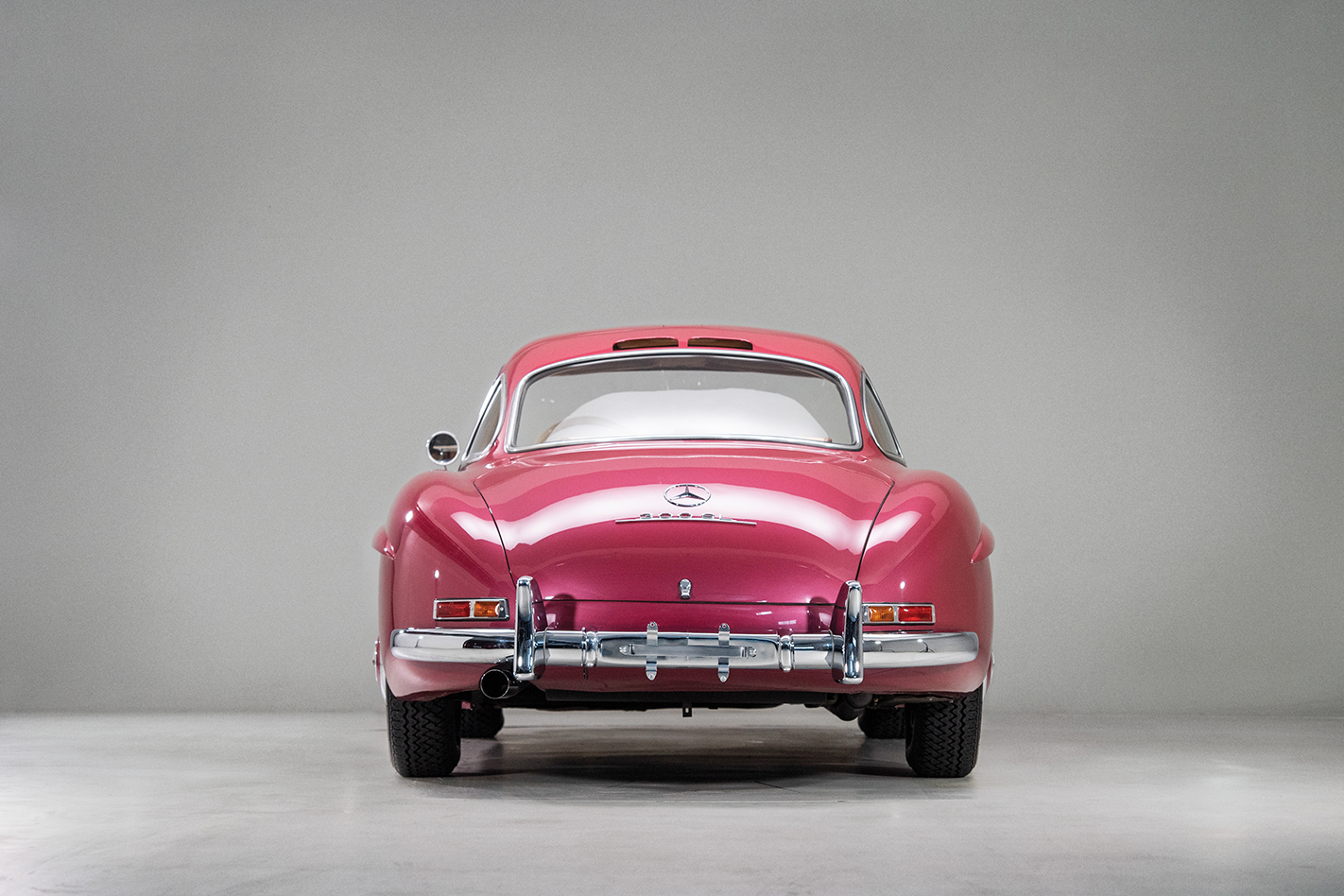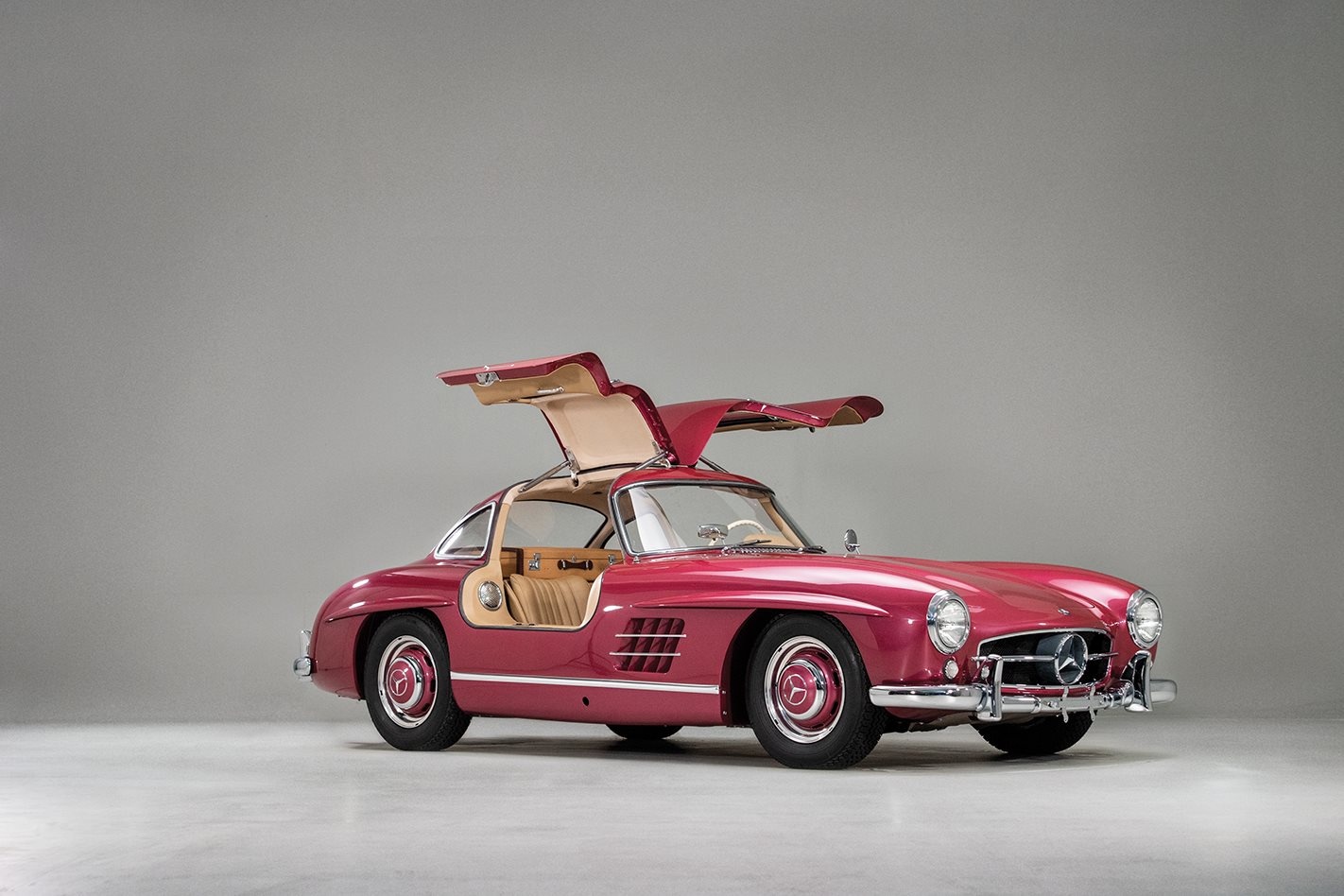The fastest and most technologically advanced road car in the mid-1950s? Probably some Ferrari, maybe a Maserati – or perhaps even a Jaguar, given its Le Mans successes?
The automotive pinnacle of the mid-1950s was indeed based on a dominant Le Mans racer and equally on a two-tonne limousine. And it was a Mercedes-Benz.
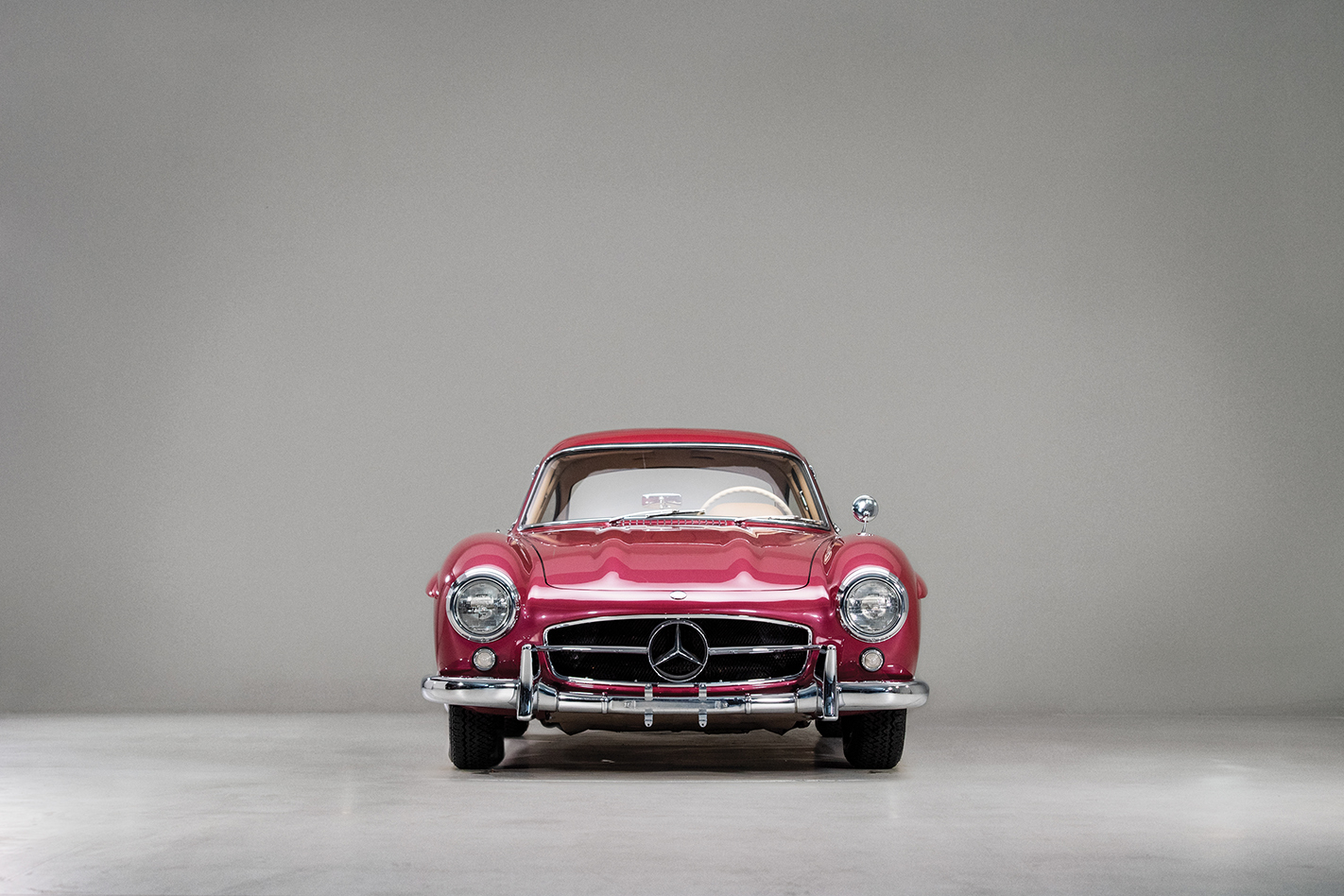
One of the world’s most recognised cars with its roof-hinged gullwing doors, the W198 300 SL (‘super-light’) touched down in February 1954 at the New York motorshow. The venue betrayed its links to US car importer Max Hoffman, whose influence also spawned 1950s roadsters from BMW, Porsche and Alfa Romeo.
Mercedes-Benz’s engineering had reached peak geek with its Silver Arrows machines, but its post-WWII return to racing in 1952 was under tight financial constraints. Team manager Alfred Neubauer and engineer Rudolf Uhlenhaut, inspired by Jaguar’s 1951 Le Mans-winning C-Type, proposed a lightweight sports-racing coupe that parts-pillaged the new W186 300 limousine.
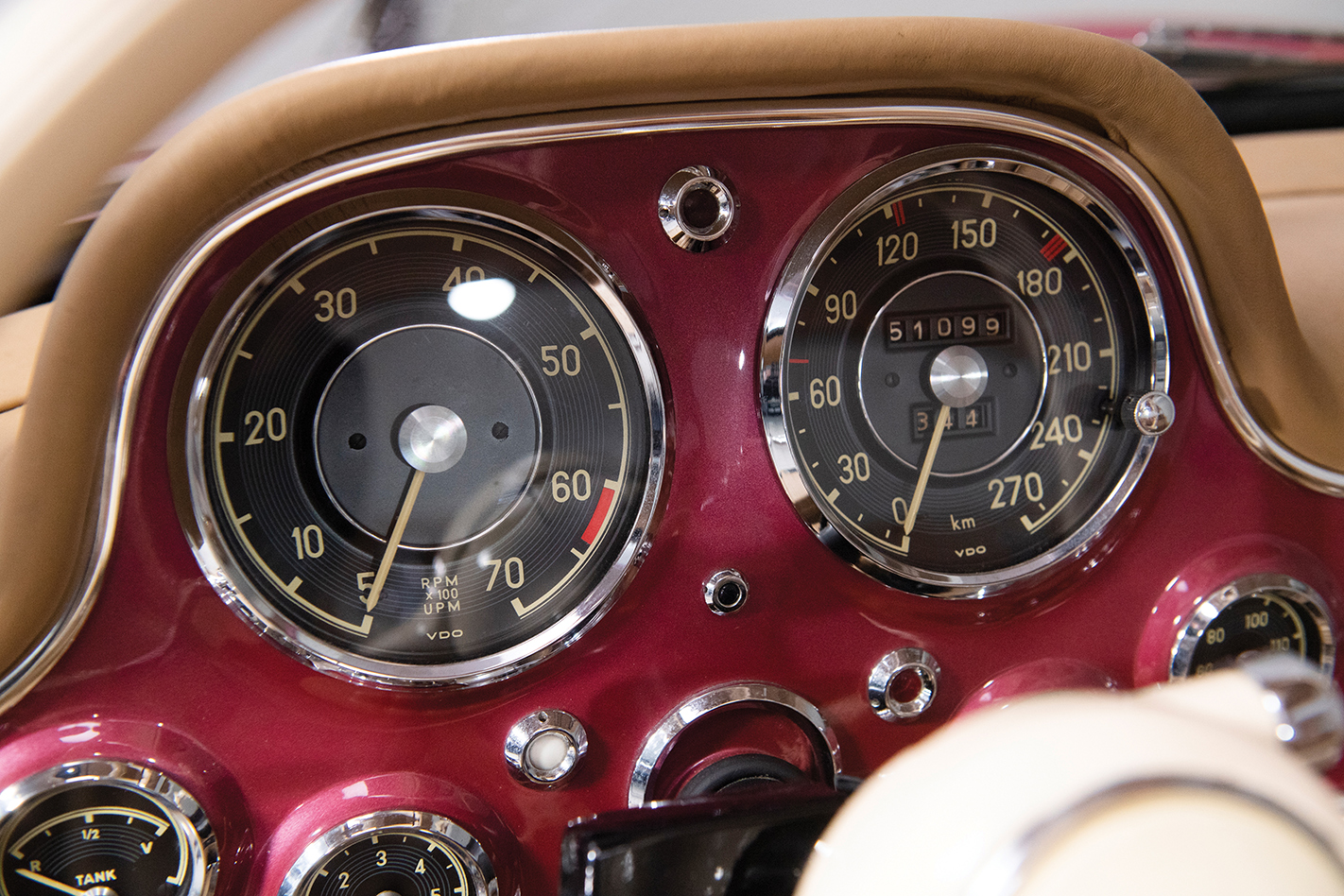
The limo – favoured ride of the first German Chancellor, Konrad Adenauer – donated its 3.0-litre, sohc in-line six M186 engine, four-speed manual transmission, all-independent suspension, 260mm drum brakes and other components.
Uhlenhaut designed a ridiculously light (50kg) aluminium spaceframe chassis which, for torsional rigidity, had side sills initially right up to the waistline. These gave rise to the distinctive gullwing doors. Kerb weight was just 870 kilograms.
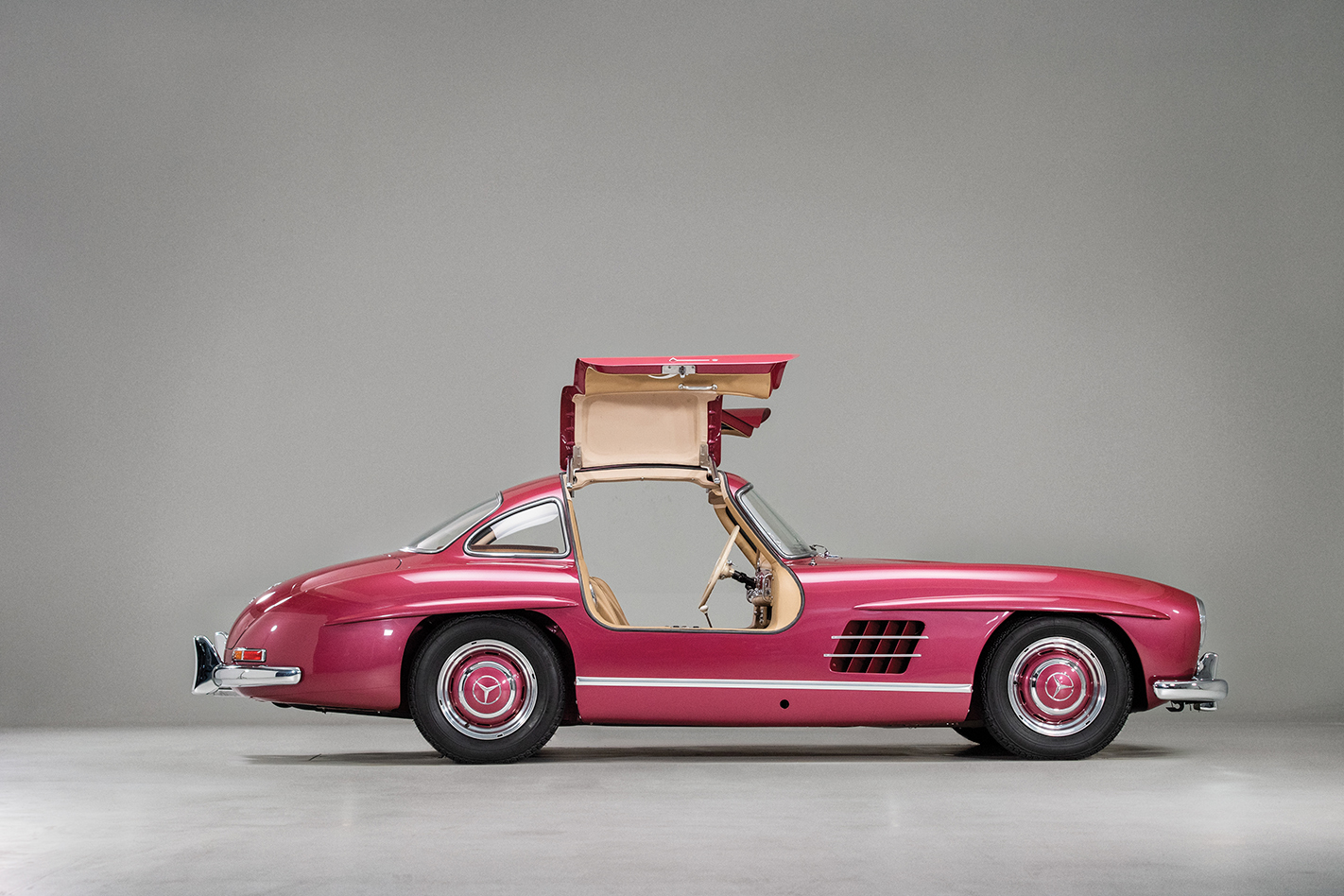
The W194 300 SL racers swept to 1-2 finishes at the 1954 Le Mans 24-Hour and the Carrera Panamericana.
Hoffman was so convinced of the potential US market for a road-going 300 SL that he offered to place orders for 500 each of a coupe (W198 I) and roadster (W198 II). Two New York show cars were ready in just five months. The coupe’s US$6800 sticker was almost double that of Chevrolet’s new-beaut Corvette.
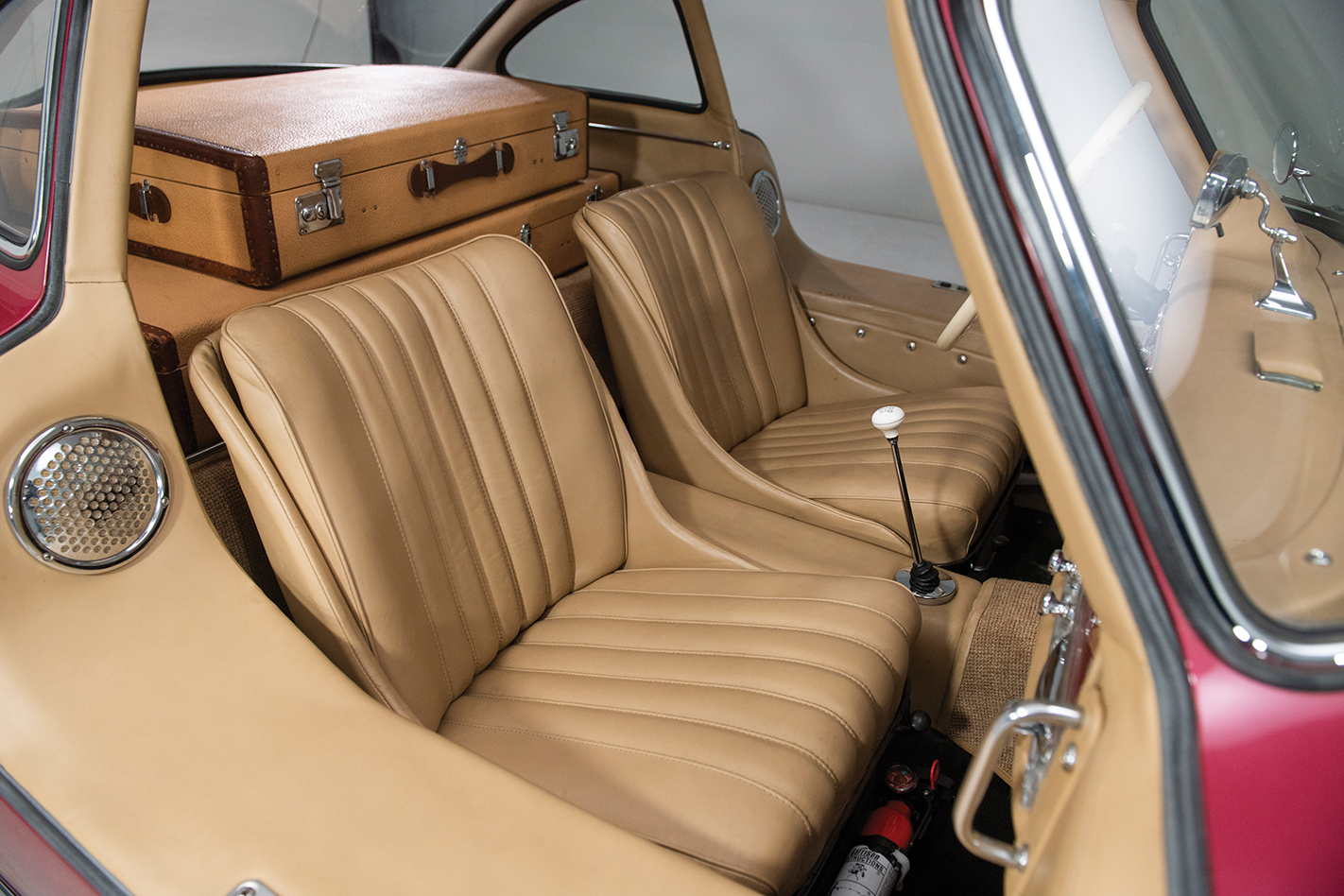
Retaining a spaceframe chassis, the more stylised bodywork was now mainly steel (with aluminium doors, bonnet and boot), and with a comfortably appointed interior, amounted to a kerb weight of 1300kg. The sohc six-cylinder engine had gained Bosch mechanical direct fuel injection (a production first), producing 22 percent more power and a higher top speed (260km/h) than its W194 racing predecessor.
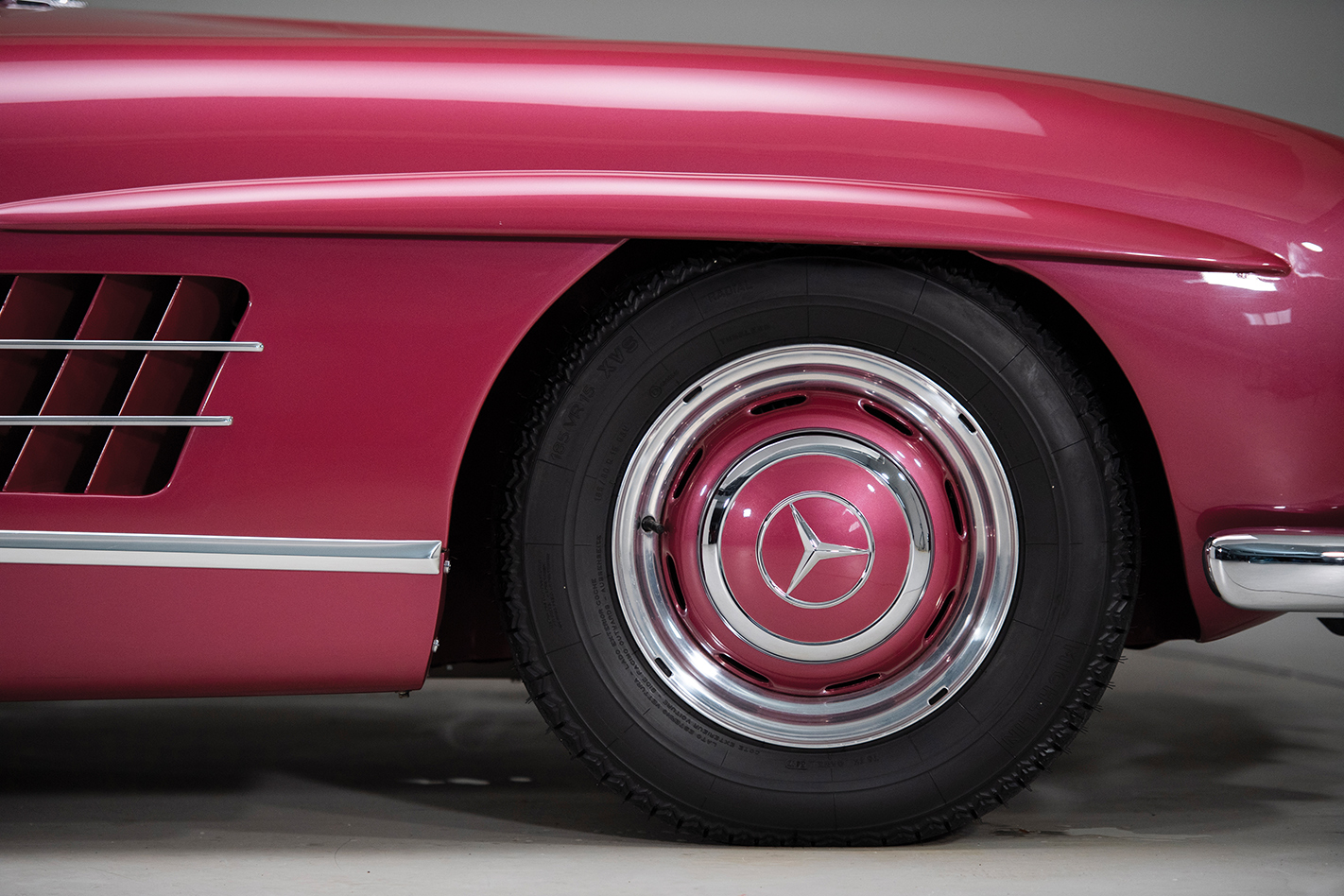
The 300 SL coupe was superseded in 1957 by the better roadster, with its revised spaceframe, redesigned rear suspension and, from 1961-’62, four-wheel disc brakes and an all-alloy engine.
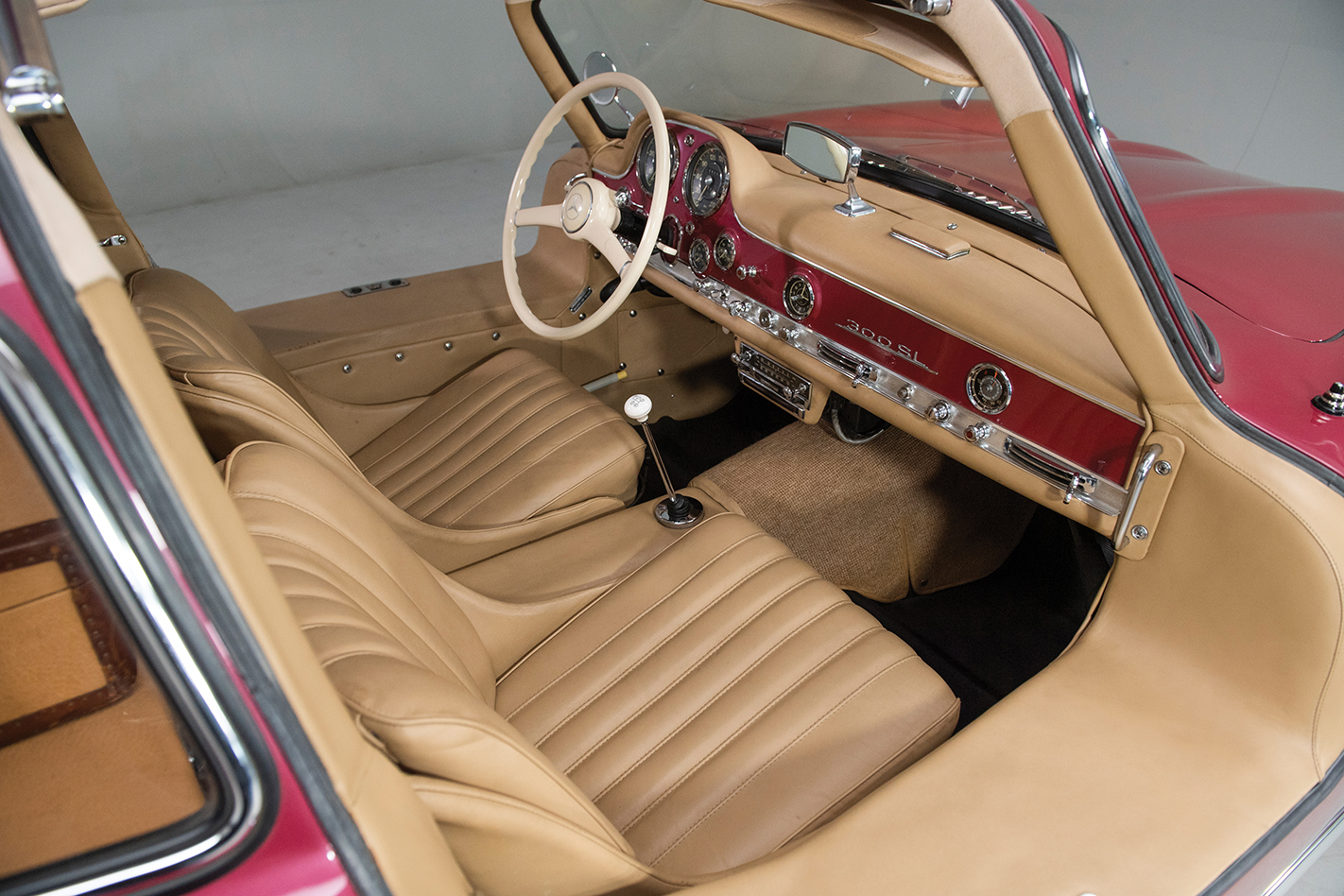
SOME LIKE IT HOT
The 300 SL coupe’s stratospheric price tag brought a sports-luxe interior with tartan fabric or leather on the one-piece buckets, a drop-hinged steering wheel, trimmed alloy dash and comprehensive ventilation. But its racing roots couldn’t be ignored: access was awkward, a large glass area and fixed windows made it a hothouse, and the spare took all the boot space.
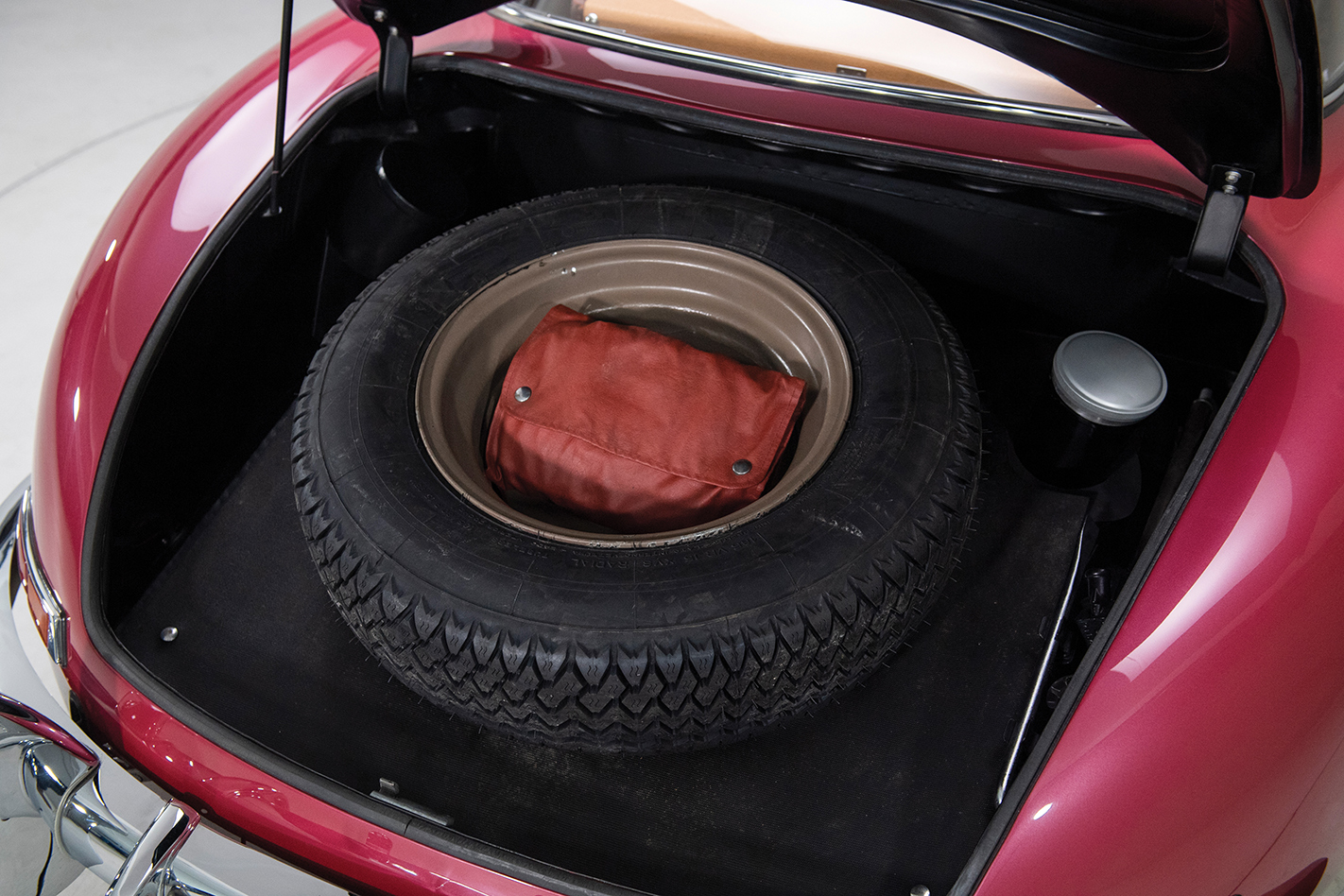
POWER PLAY
The 2996cc, sohc iron-block straight-six weighed 265kg and made 85kW in its original M186 300-limo spec. The dry-sumped W194 racer’s triple Solex carbs (and 129kW output) gave way to the W198 300 SL’s Bosch mechanical direct injection, producing 148kW at 5800rpm and 275Nm at 4600rpm. 0-100km/h took 8.8sec.
